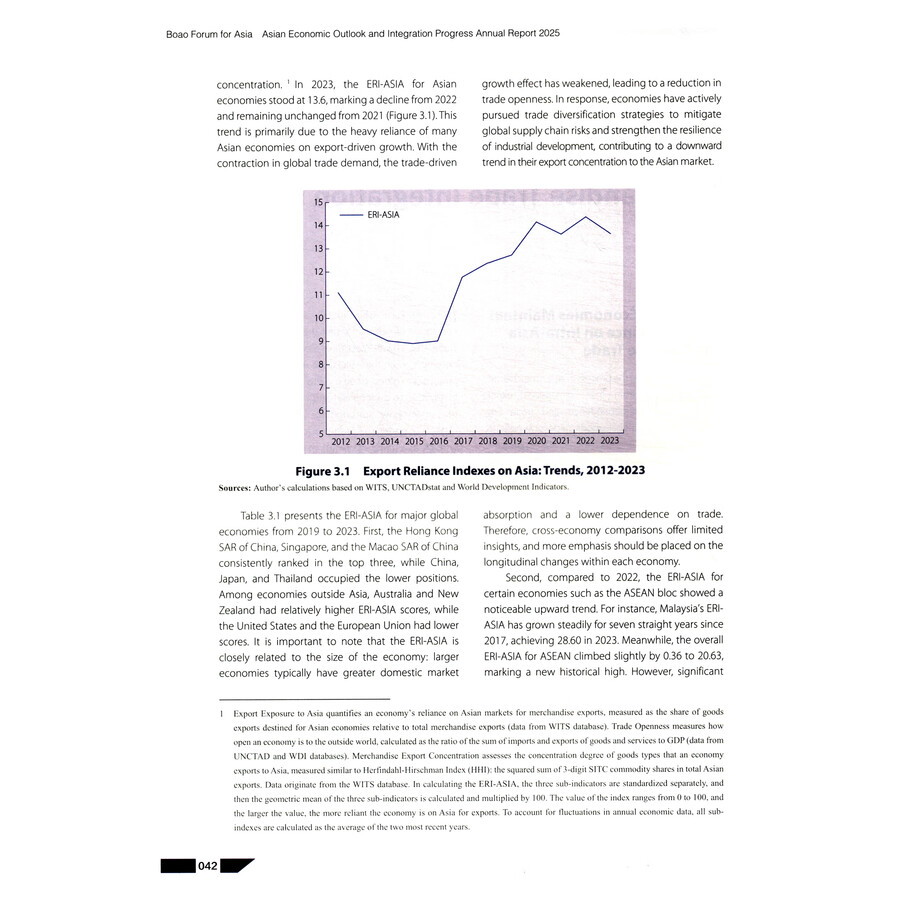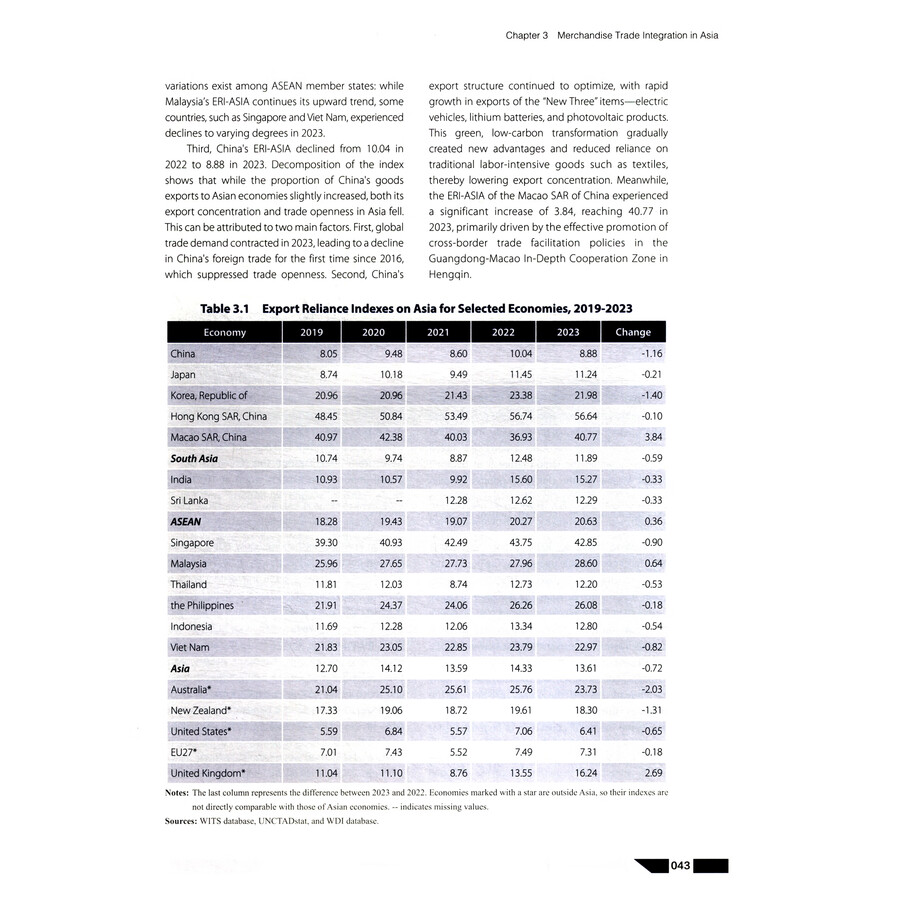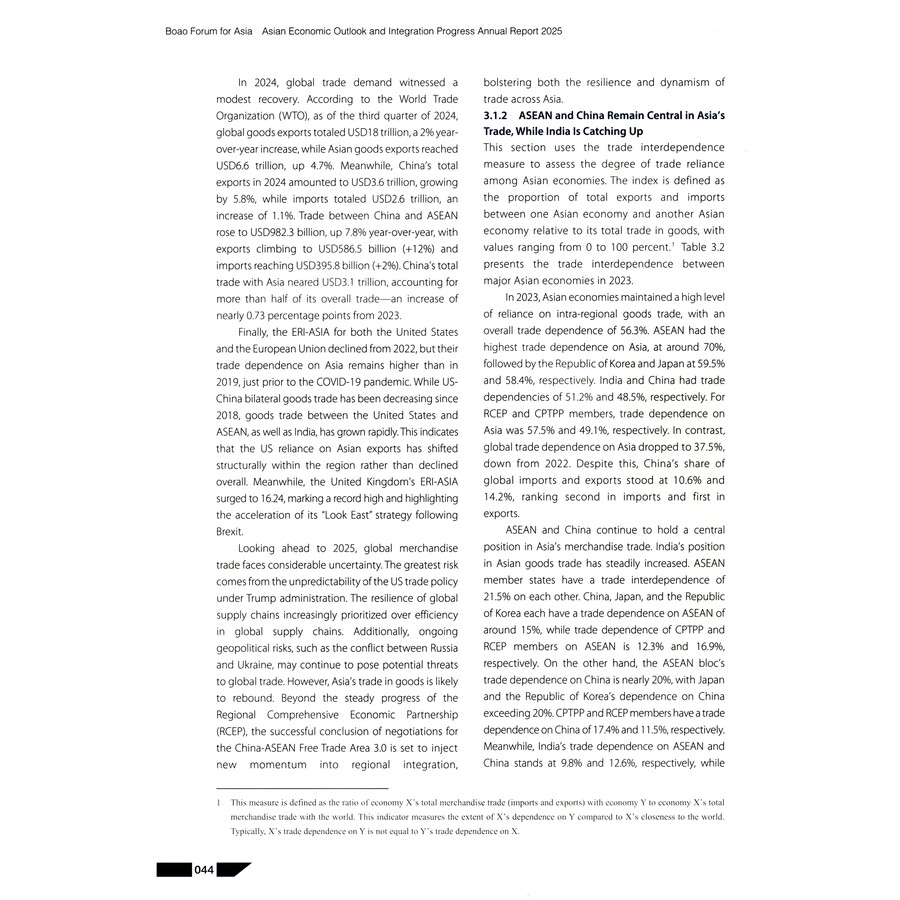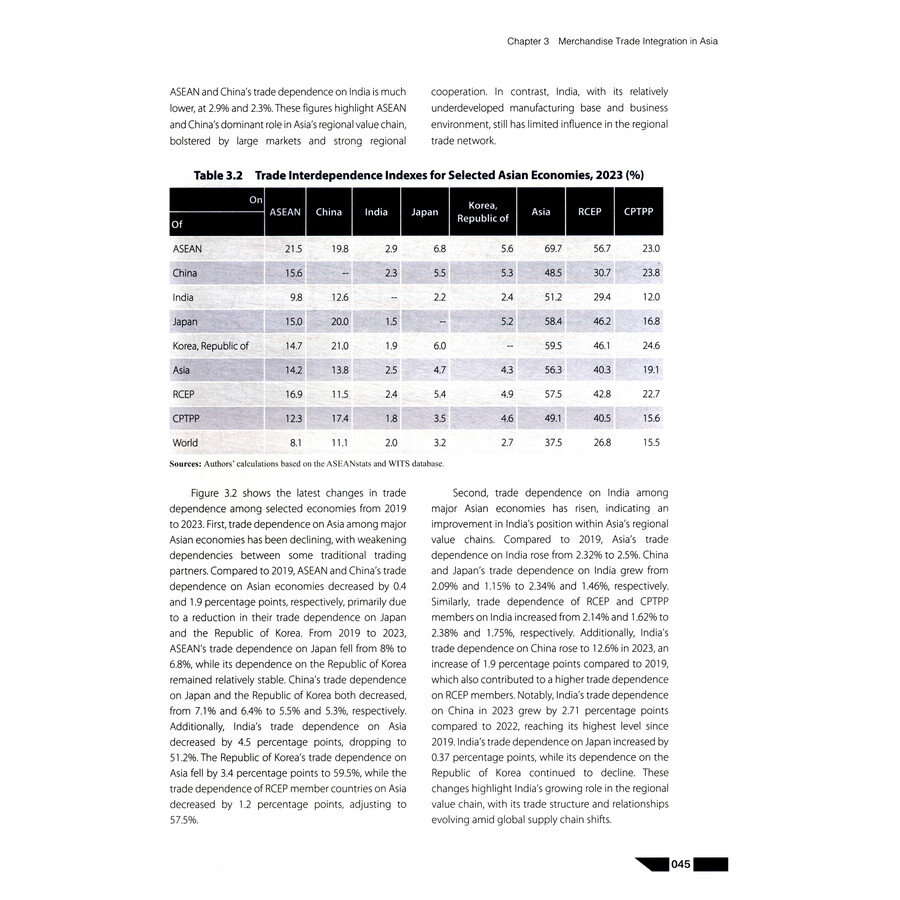Details
The international situation was fraught with intertwined changes and chaos in 2024. Geopolitical tensions persisted and escalated, the practices of "decoupling" and "disrupting supply chains" intensified, the Global South was rising at an accelerated pace, and the once-in-a-century changes were moving toward a clearer direction. The world economy started to recover slowly amid an ease in inflation and a rebound in global trade, but its growth momentum remained weak and highly divided across regions and countries. Unilateralism and protectionism gained new steam, while disruptive technologies such as artificial intelligence and restructured supply chains reshaped the economic and security landscape, injecting new uncertainty into the global economy and international economic and trade cooperation.
Asian economies, particularly China and ASEAN, continued to demonstrate their strong resilience against these challenges. They maintained their leading position in terms of economic growth, trade, innovation, sustainable development and regional economic integration, while nurturing new potential and development opportunities.
In spite of the persistently challenging external environment, Asian economies have leveraged their favorable conditions to reverse the declining trend and stabilize their economic growth. International organizations including the United Nations, the World Bank, and the International Monetary Fund universally project the global economy to stabilize or even resume expansion in the next two years. The Boao Forum for Asia (BFA) Academy's estimates suggest that Asia, one of the world's main growth engines, will grow 4.5% in 2025, with its share rising to 48.6% among the world's economic output measured by purchasing power parity. Economies including China, India, Viet Nam, the Philippines, Mongolia, Cambodia and Indonesia will maintain a relatively high growth rate over 5%. In terms of trade, Asia's external trade in goods gradually regained its growth rate, while its service trade continued to grow rapidly. Especially, China continued to report a record high in both its goods and services trade. When it comes to investment, the global reliance of foreign investment on Asian economies picked up amid fluctuations, reaching around 60% in recent years. China and ASEAN were still the most attractive Asian economies for foreign investment. With regard to innovation, Asia far exceeded other regions in terms of R&D investment intensity and patent filings, emerging as a global leader in technological innovation. Asia now stands at the forefront of a new industrial revolution.
In the face of strong headwinds for economic globalization, Asia has achieved a greater success in deepening its regional integration. Steady progress has been made in new-generation trade agreements such as the Regional Comprehensive Economic Partnership (RCEP), the Comprehensive and Progressive Agreement for Trans-Pacific Partnership (CPTPP), and the Digital Economy Partnership Agreement (DEPA). In particular, by integrating Asia's economic and trade cooperation mechanisms and unleashing the benefits of a large regional market, RCEP has facilitated Asia's integration process of trade in goods and services, and has strengthened the overall resilience and vitality of regional trade. Asia has become a key pillar of global value chains-China has basically maintained its dominance and ASEAN has remarkably elevated its position in global value chains, while India has been increasingly integrated into Asia's regional value chains. With its huge domestic market and unique advantages, China plays a vital role in safeguarding trade stability across the Asia-Pacific region. For four consecutive years, ASEAN and China have been the largest partner of each other for trade in goods. China's high-level opening up will unlock the great potential of regional cooperation. As a result of the successful conclusion of the China-ASEAN FTA 3.0 Upgrade Negotiations, the trade in the Asia-Pacific region promises to gain stronger momentum. Moreover, the deepening digital economy and green economy are enabling a bigger role of service trade in advancing Asian regional integration. These achievements and highlights are practically significant in the current situation.
Abstract
About the Author
Editor's Comment
Table of Contents
FOREWORD
PREPARATION NOTES AND ACKNOWLEDGEMENTS
LIST OF CONTRIBUTORS
EXECUTIVE SUMMARY
ACRONYMS
Part I Asian Economic Outlook and Policies
Chapter 1 Asian Economic Prospects
1.1 Overview
1.2 Economic Growth
1.3 Employment and Income Prospects
1.4 Inflation
1.5 Trade and Investment
1.6 Financial Markets
Chapter 2 Economic Policy Outlook for Major Asian Economies
2.1 External Macro Policies
2.2 Fiscal Policies
2.3 Monetary Policies
Part II Asian Economic Integration Progress
Chapter 3 Merchandise Trade Integration in Asia
3.1 Asian Economies Maintain Strong Reliance on Intra-Asia Merchandise Trade
3.2 Integration of Factory Asia
Chapter 4 Service Trade Integration of Asian Economies
4.1 Service Trade in Asian Economies
4.2 The Current State of Digital Trade Development in Asia
4.3 Key Service Industry Analysis (Tourism as Example)
Chapter 5 Asian Economic Integration in Terms of Direct Investment
5.1 The Status of Asian Economic Integration in Terms of Direct Investment
5.2 Cross-Border Investment Outlook for Asia
Chapter 6 Financial Cohesive Progress in Asia
6.1 Portfolio Investment of Global and Asian Economies
6.2 Current Landscape of Global and Asian Cross-Border Banking
Part III RCEP: Shaping the New Future for Asia's Economy
Chapter 7 RCEP: Shaping the New Future for Asia's Economy
7.1 RCEP: Demonstrating the Determination and Ability of Open Cooperation
7.2 RCEP: An Important Force Promoting Regional Economic Integration
7.3 RCEP: Key Challenges in Comprehensive Implementation
7.4 RCEP: Jointly Building the High-Level Largest Free Trade Area



